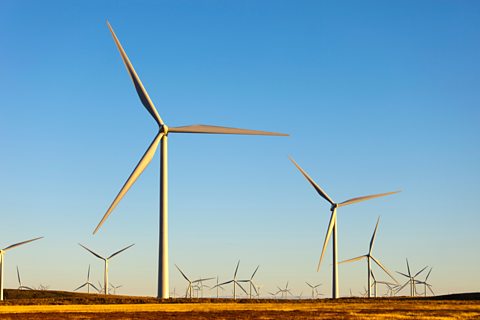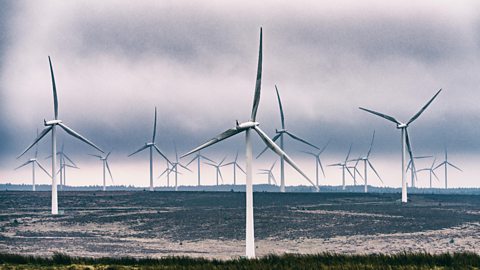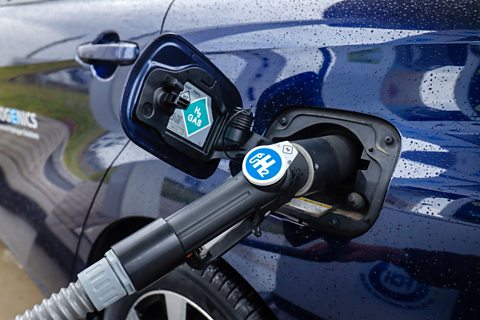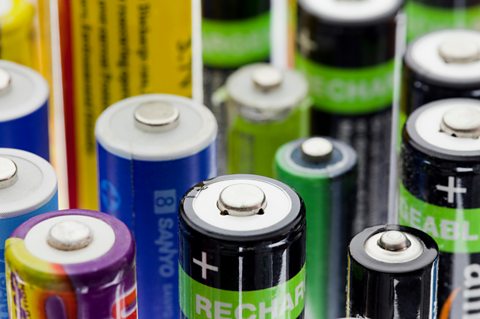Key facts
Wind power is a renewable energy source. Wind turbines turn energy from the wind into electricity.
Onshore wind is Scotland’s main source of renewable energy. In 2020 about 70% of electricity generated in Scotland came from onshore wind.
Offshore wind is the third biggest source of electricity, after hydro. Windfarms like Beatrice Offshore Windfarm power hundreds of thousands of homes.

Wind power and its impact
Find out how we can use the power of the wind to generate electricity,
The wind is so annoying but, actually, it can be pretty useful, too, when it comes to energy. Scotland can get pretty windy so it’s not surprising that we generate a lot of renewable electricity from it.
Wind is the movement of large amounts of air from areas of high atmospheric pressure to areas of low pressure. We’ve been using wind energy for centuries but these days, when we talk about wind energy we’re usually talking about using wind to generate electricity. To do this, we use wind turbines.
Wind turbines are enormous. Some are over one-hundred and twenty metres tall. They can turn to face into the wind and have giant blades that are shaped so that even gentle winds will make them turn.
The kinetic energy of the wind turns the blades. A shaft runs from the blades to a gear box. The gears turn the slow spin of this shaft to a much faster spin in a second shaft and this spins a generators with turns this kinetic energy into electrical energy.Scotland has plenty of hills and a lot of coastlines. These are ideal places to develop wind energy.
Lorna Bennett, Offshore Renewable Energy Project Engineer: In 2020, over 70 percent of Scotland’s energy generation came from wind power – both onshore and offshore.
Onshore wind is the single biggest renewable technology in use in Scotland – which is some achievement. Ensuring access to affordable and clean energy across Scotland. No fuel costs and no pollution. So, what’s the catch?
Well, wind farms can be expensive to build. Wind turbines also need an ideal wind to work properly. If the wind is too light then the blades won’t spin and there’s no electricity. If the wind is too strong the turbines are turned off so that they aren’t damaged. So we can’t rely on a steady supply of electricity from wind all the time.
But there is a possible solution - batteries. Building enormous batteries means that we can store that extra energy produced when it is windy and then use it when the turbines aren’t turning. Scotland is planning to build a whole lot more of them, so they’re not going away anytime soon.
So, what do you think about expanding the use of wind energy in the future?
How wind turbines generate electricity
Wind energy uses wind to generate electricity. To do this we use wind turbines. Wind turbines can be enormous! Some are 120 metres tall!
They can turn to face into the wind and have giant blades that are shaped so that even gentle winds will make them turn.
- The kinetic energy of the wind turns the turbine blades.
- A shaft running from the blades to a gearbox (nacelle) spins round as the blades turn.
- The gears use the slow-spin of this shaft to make a second shaft spin much faster.
- This spins magnets inside a generator. The magnets spin very fast past coils of copper wire making electricity start to flow through the wire. Kinetic energy is changed to electrical energy
- Electricity travels through cables to the National GridThe name given to the network of pylons and power lines that transport electricity to our homes, schools, offices and businesses..
Location factors
 Image source, ALAMY: DTH0 A6
Image source, ALAMY: DTH0 A6Wind turbines work best in open places where no obstacles block the wind. They are often grouped together into large wind farms.
Exposed hilly areas are good locations for wind farms, as winds tend to be stronger and more constant. Offshore locations also work well because there is nothing to block or slow down the wind.
Some people object to the appearance of wind farms, so their visual impact needs to be considered.
Wind turbines can disturb wildlife and be dangerous to migrating birds if they are not carefully positioned.
Sustainability of wind power
To develop a sustainable future you need to think about meeting today's needs and protecting the environment and resources for the future.
Wind energy is a renewable source. Wind is caused by the Sun warming air more in some areas than others, causing it to move. As long as the Sun lights the Earth, wind will not run out.
Wind power is sustainable because it releases no greenhouse gases or pollution,
The negative impact of wind farms is down to their local impact if they disturb or damage local wildlife or habitats. The manufacture and transport of turbines can also have an impact. The towers are made of steel which is made using coal. The blades are made from composite materials like carbon fibre which can be difficult to recycle.
 Image source, Alamy_KYH7E3
Image source, Alamy_KYH7E3Advantages and disadvantages of wind power
Advantages
- Scotland has plenty of hills and a lot of coastlines. It’s the ideal place to develop wind energy.
- Wind is a renewable Something that does not run out when used. energy resource and there are no fuel costs.
- No harmful pollution or greenhouse gases are produced so wind energy does not create carbon emissions.
- Modern wind turbines are very reliable and powerful machines. They are very efficient at generating electricity and the turbines will have a lifespan of between 20 and 25 years.
Disadvantages
- Wind farms can be expensive to build.
- Wind turbines need an ideal wind to work properly. If the wind is too light then the blades won’t spin and there is no electricity. If the wind is too strong, the turbines are turned off so that they aren’t damaged.
- Some people find wind farms to be an eyesore and claim that these are a blot on the landscape and create visual pollution.
Test your knowledge
More on Energy sources and sustainability
Find out more by working through a topic
- count12 of 12

- count1 of 12

- count2 of 12

- count3 of 12
